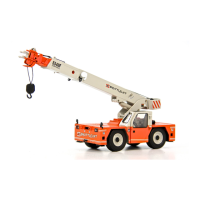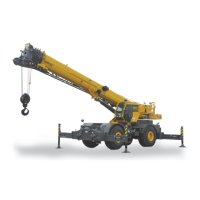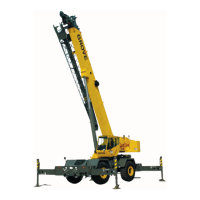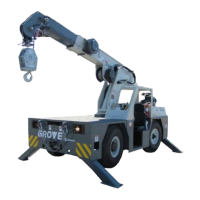TRANSMISSION AND TORQUE CONVERTER 5540F/YB5515 SERVICE MANUAL
7-30 Published 10-21-2010, Control# 198-04
Installing Transmission
1. Clean and lubricate the splines of the transmission input
shaft. Install the transmission to the converter, ensuring
that the dogs on the converter oil seal shaft engage with
the recesses on the transmission input. Take care not to
damage the oil seal.
2. Install twelve bolts and lockwashers. Tighten bolts to a
torque of 23 lb-ft (31 Nm).
3. Install the power unit into the crane. See Engine and
Engine Systems, Chapter 6.
4. Connect all removed hydraulic lines, electrical
harnesses, cables, etc.
5. Fill the transmission with recommended oil. See
Preventative Maintenance, Chapter 5.
Servicing the Transmission
Removal
1. Remove complete power unit. See Engine and Engine
Systems, Chapter 6.
2. Fasten engine to an engine stand.
3. Drain the transmission. See Preventative Maintenance,
Chapter 5.
4. Using an overhead crane and chains to support the
weight of the transmission, remove the 12 bolts and
lockwashers that fasten the transmission housing to the
engine flywheel housing. Remove the transmission and
torque converter assembly and place in a clean, work
area where the torque converter can be removed. It is
recommended that the transmission be mounted in a
service fixture. Remove the torque converter.
Transmission Gearbox Repair
Dismantling
Cleanliness is of the utmost importance when servicing the
gearbox. All precautions to prevent any ingress of dirt, grit
etc. must be taken. To this end wash the exterior of the
gearbox assembly as follows:
Make sure that all open ports and orifices are effectively
plugged. Remove any deposits of dirt, grit and oil from the
outer casings using a suitable degreaser and water. Dry the
casings.
NOTE: Paragraph numbers correspond with numbers in
illustrations.
CAUTION
The transmission weighs approximately 400 lb (181 kg)
dry. Use adequate hoist and chains. Personal injury could
occur from improperly supported transmission.
WARNING
Certain seals and gaskets may contain fluoroelastomeric
materials such as Viton, Fluorel and Technoflon.
Fluoroelastomeric materials subject to high temperatures
can produce highly corrosive hydrofluoric acid. THIS
ACID CAN SEVERELY BURN.
New fluoroelastomeric components at ambient
temperature require no special safety precautions.
Use of fluoroelastomeric components whose
temperatures have not exceeded 572° F (300° C) require
no special safety precautions. If evidence of
decomposition (e.g. charring) is found, see the next
paragraph for safety instructions. DO NOT TOUCH
COMPONENTS OR SURROUNDING AREA.
Used fluoroelastomeric components subjected to
temperatures greater than 572° F (300° C) (e.g. engine
fire) must be treated using the following safety procedure.
Make sure that heavy duty gloves and safety glasses are
worn:
1. Ensure that components have cooled then remove
and place materials into plastic bags.
2. Thoroughly wash contaminated area with a 10%
calcium hydroxide or other suitable alkali solution, if
necessary use wire wool to remove burnt remains.
3. Thoroughly wash contaminated area with detergent
and water.
4. Contain all removed material, gloves etc., used in this
operation in sealed plastic bags and dispose of in
accordance with Local Regulations.
NOTE: DO NOT BURN FLUORO-ELASTOMERIC
MATERIALS. If contamination of skin or eyes
occurs, wash the affected area with a
continuous supply of clean water or with calcium
hydroxide solution for 15 - 60 minutes. Get
medical attention immediately.
Reference Only

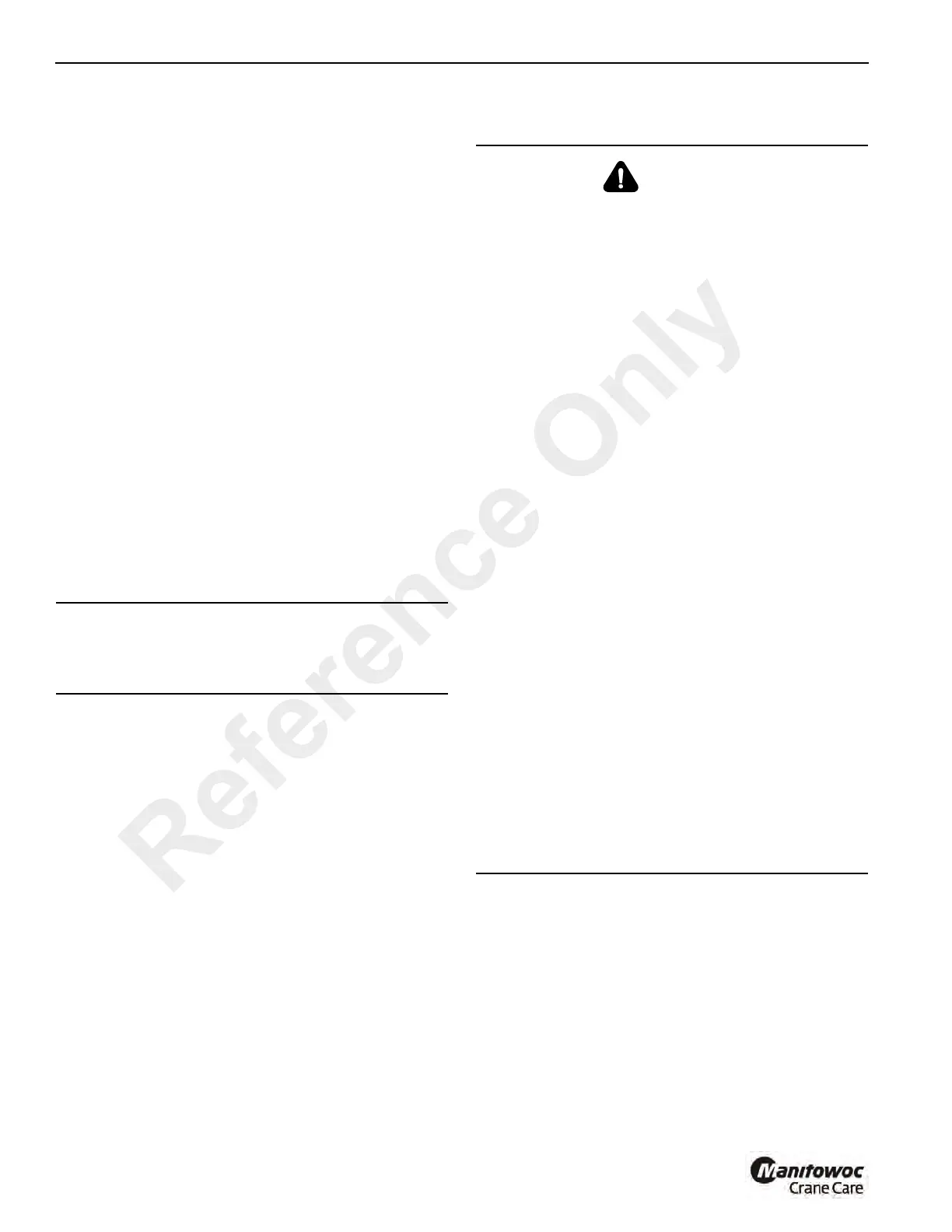